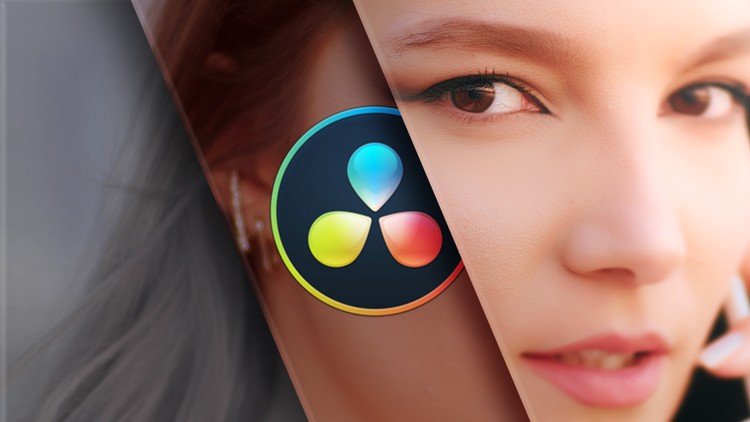

- #DAVINCI RESOLVE COLOR GRADING COMPARISON HOW TO#
- #DAVINCI RESOLVE COLOR GRADING COMPARISON MOVIE#
- #DAVINCI RESOLVE COLOR GRADING COMPARISON SKIN#
- #DAVINCI RESOLVE COLOR GRADING COMPARISON FULL#
It works for lights, timelapse, and more. The Deflicker tool can make this almost disappear. In some environments where you have lights you can’t control (like fluorescents) you can get some flickering in your footage. What you can then do is compress the hue a touch to help smooth out your subject.
#DAVINCI RESOLVE COLOR GRADING COMPARISON SKIN#
Then you can select a middle point of their overall skin as the target color. Looking at a person you can start by masking/qualifying the skin tones. Fun, but let’s talk about something practical. With hue, saturation, and luminance sliders you can even push everything fully into a solid color. The Color Compressor tool will move the image you are working on closer to a target color. Since it can map to different color spaces. It can also help you match up footage from different cameras. You’ll still obviously have to use your regular grading tools after this, but it is a great place to start. The Color Space Transform setting is built into Resolve and allows you to get a tone mapped image without potentially losing any data. Not a terrible idea, but since it is applied early in the chain it can end up limiting the footage’s potential. Oftentimes users will throw on a quick LUT to convert log footage into something close to Rec.709. Understanding image processing flow is among the most complicated areas of color grading. You can tweak the strength of the effect to get it just right and you should quickly see a marked improvement. First, mask out or qualify the area you want to adjust-the sky in this example.

What you’ll want to use is the Deband effect. A common problem with 8-bit video is that it struggles with smooth gradations, meaning you’ll see banding in areas like a clear sky. One particular example is that many cameras still record in a limited 8-bit space.

Oftentimes we are working with less than ideal footage.
#DAVINCI RESOLVE COLOR GRADING COMPARISON FULL#
If you still haven’t taken the full plunge into DaVinci Resolve’s OpenFX page now might be the time with a new video from Color Grading Central that details five different tricks and tools that everyone should know. Understanding your NLE better will only help make you a more efficient and capable editor which is extremely valuable. We have covered time-saving plugins, simple tricks for editing faster, and tracking tips just to name a few. This process can be one of the most impactful adjustments you can make to a clip because it determines the message the final image will convey.There is no shortage of tips, tricks or information to learn about DaVinci Resolve (now out of beta for version 18) and video editing in general. Color grading is important for developing the emotion of the narrative.
#DAVINCI RESOLVE COLOR GRADING COMPARISON HOW TO#
The audience will interpret how to feel based on subtle cues in the final image, including color.

Just like lighting, color affects a mood and feel of a video. Other colorists might use little to no color grading if they want to keep the footage as realistic as possible. Some make a lot of changes to the color to get a specific visual tone and mood. When it comes down to it, the amount of color grading is up to the editor or colorist. Usually, the aim here isn’t necessarily realism but to give the film a particular look to fit the genre or to make the film pop visually. During the color grading process, your goal is to adjust colors to add emotion, atmosphere and a particular aesthetics to the clip. Let’s take a look at each process individually so we can rightfully compare the two.Ĭolor grading is a more creative step in the video color process. They both refer to different processes for editing color in video. color gradingĪs stated earlier, the terms color correction and color grading are oftentimes used interchangeably. Yet, at the same time, they are both intertwined with each other.
#DAVINCI RESOLVE COLOR GRADING COMPARISON MOVIE#
Both are essential to movie making, but while sometimes they might be confused for one another, they are very different. We will additionally talk about why they are essential to the post-production and how they both are used together to create a finished film. In this article, we will define the differences between color correction and color grading. It’s imperative to know what these processes are, their function, and how they differ if you want to color edit your videos correctly. Color correction and color grading are terms that are often used interchangeably, even though these two processes have different purposes.


 0 kommentar(er)
0 kommentar(er)
